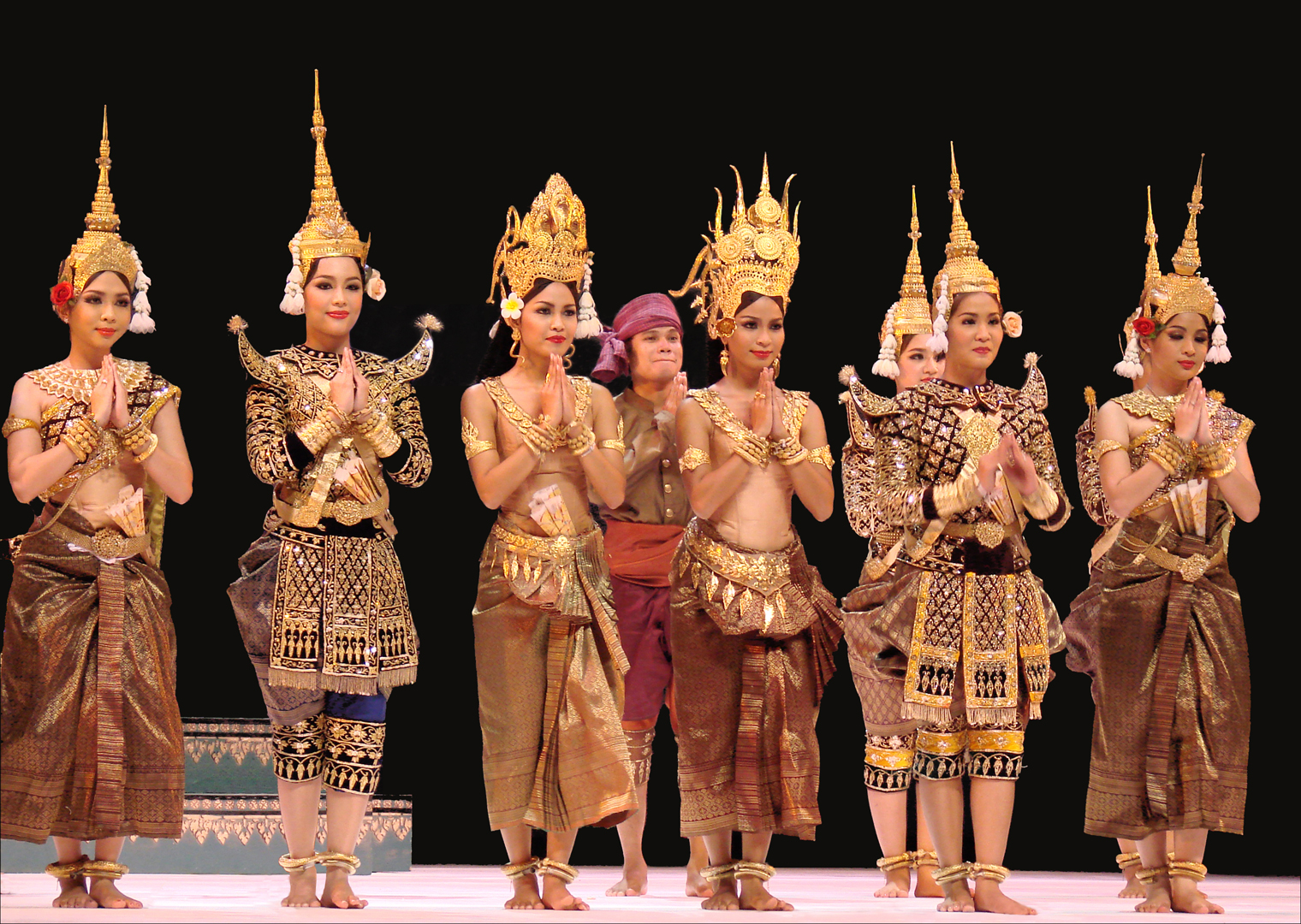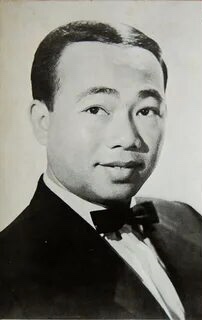|
Jamrieng Samai
:''See related articles romvong, ramkbach, kantrum, pinpeat orchestra, and music of Cambodia.'' Jamrieng Samai (ចម្រៀងសម័យ) is a genre of pop music from Cambodia. The slower dance music, ramvong and ramkbach are the two separate types of Jamrieng samai. Footnotes ReferencesMusic of Cambodia wmix.org See also *Khmer classical dance *Dance of Cambodia *Culture of Cambodia Throughout Cambodia's long history, religion has been a major source of cultural inspiration. Over nearly three millennia, Cambodians have developed a unique Cambodian culture and belief system from the syncreticism of indigenous animistic beli ... Culture of Cambodia Music of Cambodia Popular music {{Cambodia-stub ... [...More Info...] [...Related Items...] OR: [Wikipedia] [Google] [Baidu] |
Romvong
''Romvong'' ( km, រាំវង់, also romanized as ''Rom Vong'' or ''Roam Vong''), ''Lamvong'' ( Lao: ລຳວົງ - lám wóŋ) or ''Ramwong'' ( th, รำวง; ; Tai Lue: ᩃ᪁ ᩴᩅ ᩫ ᩬ, ), ''Rambung'' ( ms, رمبوڠ, vi, lăm-vông) is a type of Southeast Asian dance where both females and males dance in a circle. It is a popular folk-dance in Xishuangbanna ( China), Cambodia, Laos, Malaysia and Thailand. It is a slow round dance continuously moving in a circular manner, and incorporates graceful hand movements and simple footwork. Both men and women participate in the same circle. The circular dance style is claimed as a traditional dance in the four countries of the region where it is often part of traditional festivities, popular celebrations and modern parties. In addition to the dominate Khmer, Lao, Malay and Thai cultures, romvong is also common among many other groups indigenous to Southeast Asia. In Cambodia, for example, Ramvong dance is also ... [...More Info...] [...Related Items...] OR: [Wikipedia] [Google] [Baidu] |
Kantrum
Kantrum ( th, กันตรึม, km, កន្ដ្រឹម) is a type of folk music played by the Khmer in Isan, Thailand, living near the border with Cambodia. It is a fast, traditional dance music. In its purest form, cho-kantrum, singers, percussion and fiddles dominate the sound. A more modern form using electric instrumentation arose in the mid-1980s. Language Kantrum is interesting from a linguistic perspective. As the Khmer native to Thailand are bilingual, kantrum songs can be sung in Thai ( Isan dialect), Northern Khmer or a combination of the two. In the case of the later, it is most common that a complete verse will be sung in Thai followed by a reciprocating verse in Khmer. However, code switching between the two languages within the same verse also occurs, lending to a wide variety of possibilities for rhyming and tonal euphony. Performers In the late-1980s, Darkie became the genre's biggest star, crossing into mainstream markets in the later 1990s. ... [...More Info...] [...Related Items...] OR: [Wikipedia] [Google] [Baidu] |
Pinpeat Orchestra
The ''Pinpeat'' ( km, ពិណពាទ្យ, ) is the largest Khmer traditional musical ensemble. It has performed the ceremonial music of the royal courts and temples of Cambodia since ancient times. The orchestra consists of approximately nine or ten instruments, mainly wind and percussion (including several varieties of xylophone and drums). It accompanies court dances, masked plays, shadow plays, and religious ceremonies. This ensemble is originated in Cambodia since before Angkorian era. The pinpeat is analogous to the pinphat adopted from the Khmer court by the Lao people and the piphat ensemble of Thailand.Sam-Ang Sam "Cambodia" in ''New Grove Dictionary of Music and Musicians'', 2nd ed., 2001. pp. 861-863 Etymology According to Chuon Nath's Khmer dictionary, the 'Pinpeat' is composed of the Sanskrit terms ''vina/ pin'' () referring to the pin (harp), which was formerly used as the premiere instrument in this ensemble, and ''vadya/ padya/ peat'' () re ... [...More Info...] [...Related Items...] OR: [Wikipedia] [Google] [Baidu] |
Music Of Cambodia
The music of Cambodia is derived from a mesh of cultural traditions dating back to the ancient Khmer Empire, India, China and the original indigenous tribes living in the area before the arrival of Indian and Chinese travelers. With the rapid Westernization of popular music, Cambodian music has incorporated elements from music around the world through globalization. Folk and classical music Cambodian Art music is highly influenced by ancient forms as well as Hindu forms. Religious dancing, many of which depict stories and ancient myths, are common in Cambodian culture. Classical Khmer music usually is divided into three parts: ''pin peat, phleng kar,'' and ''mahori,'' all of which are associated with their religious dances. Some dances are accompanied by a pinpeat orchestra, which includes a ching (cymbal), roneat (bamboo xylophone), pai au (flute), sralai (oboe), chapey (bass moon lute or banjo), gong (bronze gong), tro (fiddle), and various kinds of drums. Each movement ... [...More Info...] [...Related Items...] OR: [Wikipedia] [Google] [Baidu] |
Cambodia
Cambodia (; also Kampuchea ; km, កម្ពុជា, UNGEGN: ), officially the Kingdom of Cambodia, is a country located in the southern portion of the Indochinese Peninsula in Southeast Asia, spanning an area of , bordered by Thailand to the northwest, Laos to the north, Vietnam to the east, and the Gulf of Thailand to the southwest. The capital and largest city is Phnom Penh. The sovereign state of Cambodia has a population of over 17 million. Buddhism is enshrined in the constitution as the official state religion, and is practised by more than 97% of the population. Cambodia's minority groups include Vietnamese, Chinese, Chams and 30 hill tribes. Cambodia has a tropical monsoon climate of two seasons, and the country is made up of a central floodplain around the Tonlé Sap lake and Mekong Delta, surrounded by mountainous regions. The capital and largest city is Phnom Penh, the political, economic and cultural centre of Cambodia. The kingdom is an elective co ... [...More Info...] [...Related Items...] OR: [Wikipedia] [Google] [Baidu] |
Ramvong
''Romvong'' ( km, រាំវង់, also romanized as ''Rom Vong'' or ''Roam Vong''), ''Lamvong'' ( Lao: ລຳວົງ - lám wóŋ) or ''Ramwong'' ( th, รำวง; ; Tai Lue: ᩃ᪁ ᩴᩅ ᩫ ᩬ, ), ''Rambung'' ( ms, رمبوڠ, vi, lăm-vông) is a type of Southeast Asian dance where both females and males dance in a circle. It is a popular folk-dance in Xishuangbanna ( China), Cambodia, Laos, Malaysia and Thailand. It is a slow round dance continuously moving in a circular manner, and incorporates graceful hand movements and simple footwork. Both men and women participate in the same circle. The circular dance style is claimed as a traditional dance in the four countries of the region where it is often part of traditional festivities, popular celebrations and modern parties. In addition to the dominate Khmer, Lao, Malay and Thai cultures, romvong is also common among many other groups indigenous to Southeast Asia. In Cambodia, for example, Ramvong dance is also ... [...More Info...] [...Related Items...] OR: [Wikipedia] [Google] [Baidu] |
Khmer Classical Dance
The Royal Ballet of Cambodia ( km, របាំព្រះរាជទ្រព្យ) is a dance company of Cambodia, famous for its luxury of costumes, accessories, gold and silver, accompanied by a beautiful soft dance. It is a dance that the Cambodian royal family created as a special treasure to show the high dignity of Cambodian dancers, the work of Queen Sisowath Kosamak, created from Khmer traditional dance. During the reign of King Norodom Sihanouk, this dance was inscribed on the UNESCO World Heritage List on 7 November 2003. Teacher Salute Ceremony in Royal Ballet The Teacher Salute Ceremony is a tribute to the teachers who trained and is dedicated to the spirit that controls the spirit in each of the characters of the Royal Ballet. Before the dancers go out to before the audience, the ceremony ensures that their performances are smooth, confident and unobstructed. Salute to the teacher has been around since ancient times when the royal dance troupe had to o ... [...More Info...] [...Related Items...] OR: [Wikipedia] [Google] [Baidu] |
Dance Of Cambodia
Dance in Cambodia ( km, របាំ ''robam'') consists of three main categories: classical dance of the royal court, folk dance which portrays cultural traditions, and social dances performed in social gatherings. Classical dance Cambodia's premier performing art form is Khmer classical dance, or ''Robam Preah Reach Trop'', a highly stylized dance form originating from the royal courts. Originally performed and maintained by attendants of the royal palaces, Khmer classical dance was introduced to the general public in the mid-20th century and became widely celebrated as iconic of Cambodian culture, often performed during public events, holidays, and for tourists visiting Cambodia. Performances feature elaborately costumed dancers performing slow and figurative gestures to the musical accompaniment of a pinpeat ensemble. The classical repertoire includes dances of tribute or invocation and the enactment of traditional stories and epic poems such as the ''Ramayana''. Two ... [...More Info...] [...Related Items...] OR: [Wikipedia] [Google] [Baidu] |
Culture Of Cambodia
Throughout Cambodia's long history, religion has been a major source of cultural inspiration. Over nearly three millennia, Cambodians have developed a unique Cambodian culture and belief system from the syncreticism of indigenous animistic beliefs and the Indian religions of Buddhism and Hinduism. Indian culture and civilization, including its languages and arts reached mainland Southeast Asia around the 1st century AD. It is generally believed that seafaring merchants brought Indian customs and culture to ports along the Gulf of Thailand and the Pacific en route to trade with China. The Kingdom of Funan was most probably the first Cambodian state to benefit from this influx of Indian ideas. There is also French colonial influence as well. History The Golden age of Cambodia was between the 9th and 14th century, during the Angkor period, during which it was a powerful and prosperous empire that flourished and dominated almost all of inland Southeast Asia. Angkor eventually c ... [...More Info...] [...Related Items...] OR: [Wikipedia] [Google] [Baidu] |
Music Of Cambodia
The music of Cambodia is derived from a mesh of cultural traditions dating back to the ancient Khmer Empire, India, China and the original indigenous tribes living in the area before the arrival of Indian and Chinese travelers. With the rapid Westernization of popular music, Cambodian music has incorporated elements from music around the world through globalization. Folk and classical music Cambodian Art music is highly influenced by ancient forms as well as Hindu forms. Religious dancing, many of which depict stories and ancient myths, are common in Cambodian culture. Classical Khmer music usually is divided into three parts: ''pin peat, phleng kar,'' and ''mahori,'' all of which are associated with their religious dances. Some dances are accompanied by a pinpeat orchestra, which includes a ching (cymbal), roneat (bamboo xylophone), pai au (flute), sralai (oboe), chapey (bass moon lute or banjo), gong (bronze gong), tro (fiddle), and various kinds of drums. Each movement ... [...More Info...] [...Related Items...] OR: [Wikipedia] [Google] [Baidu] |
.jpg)




